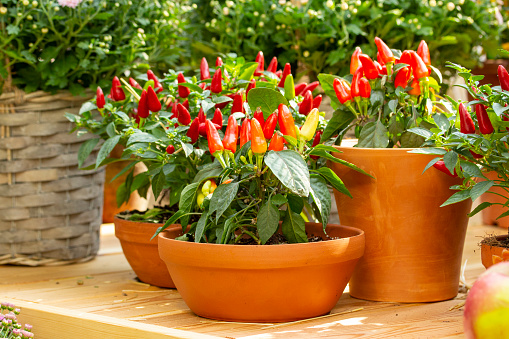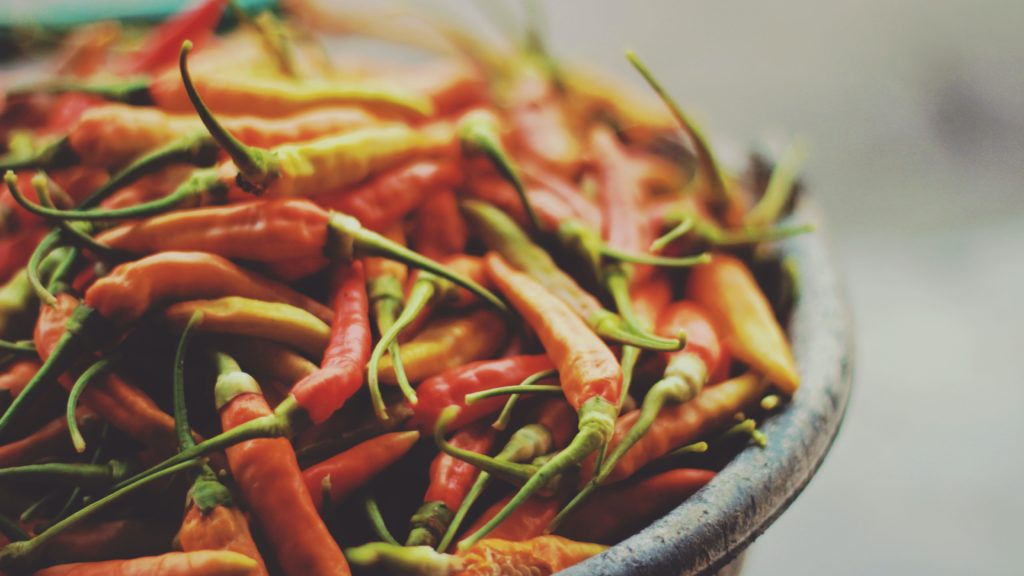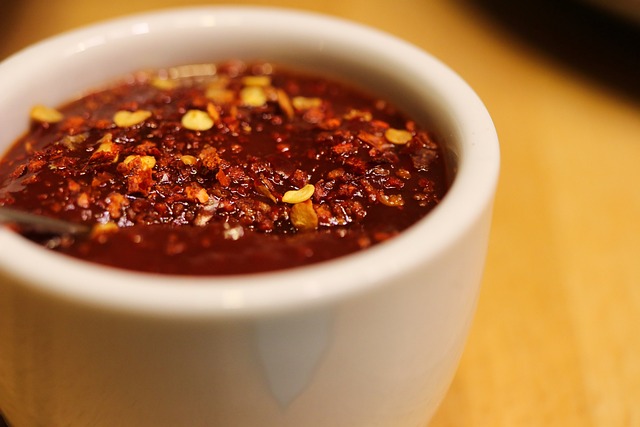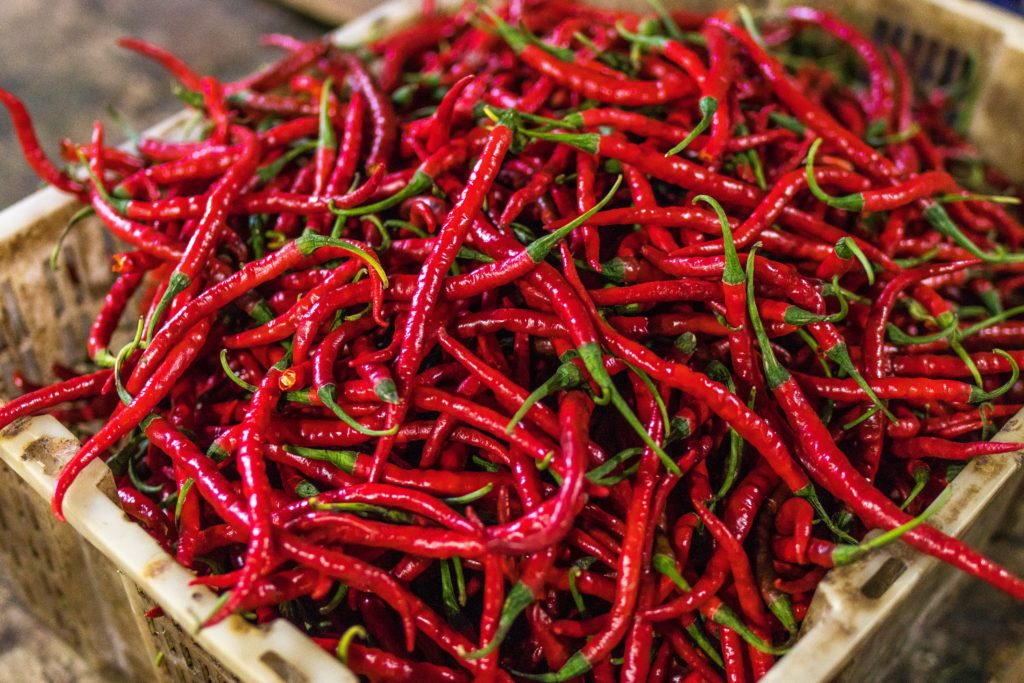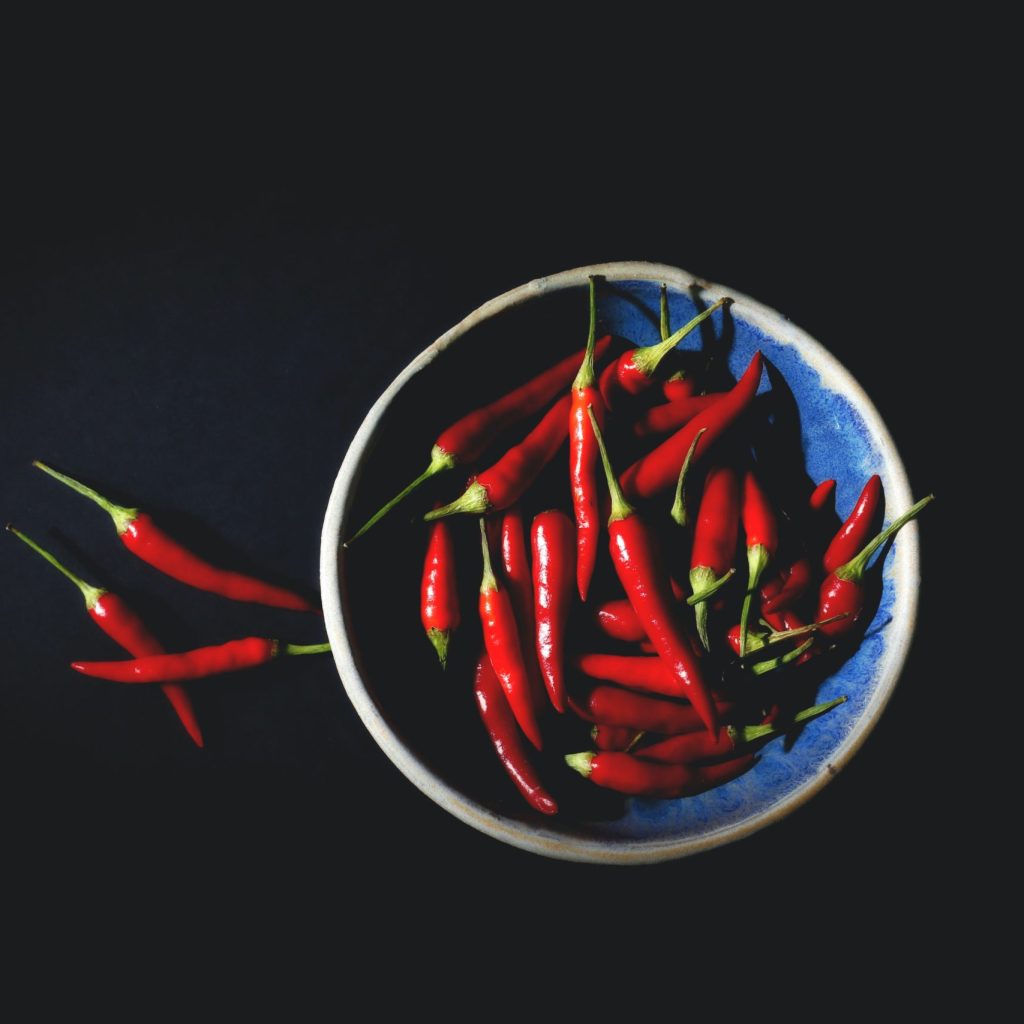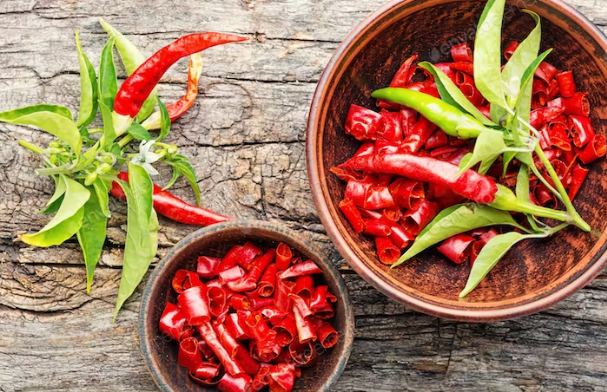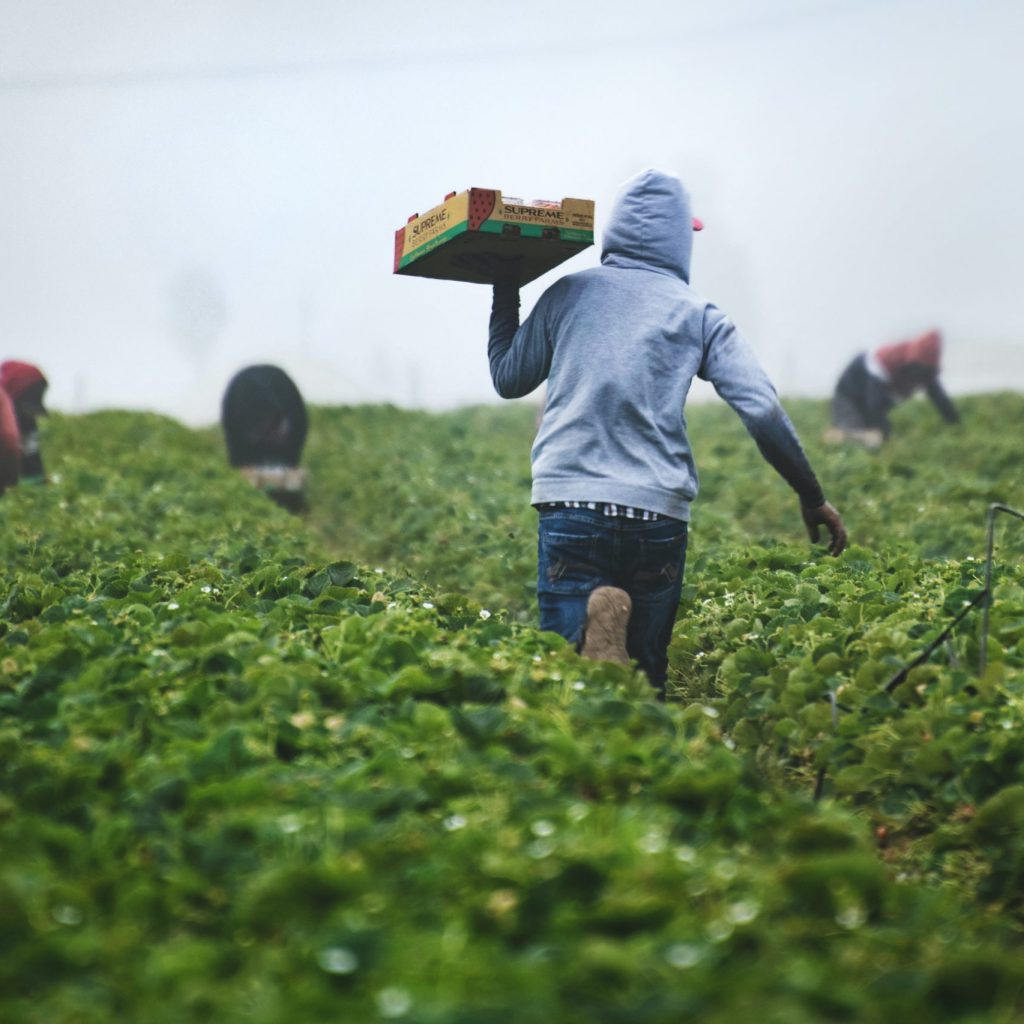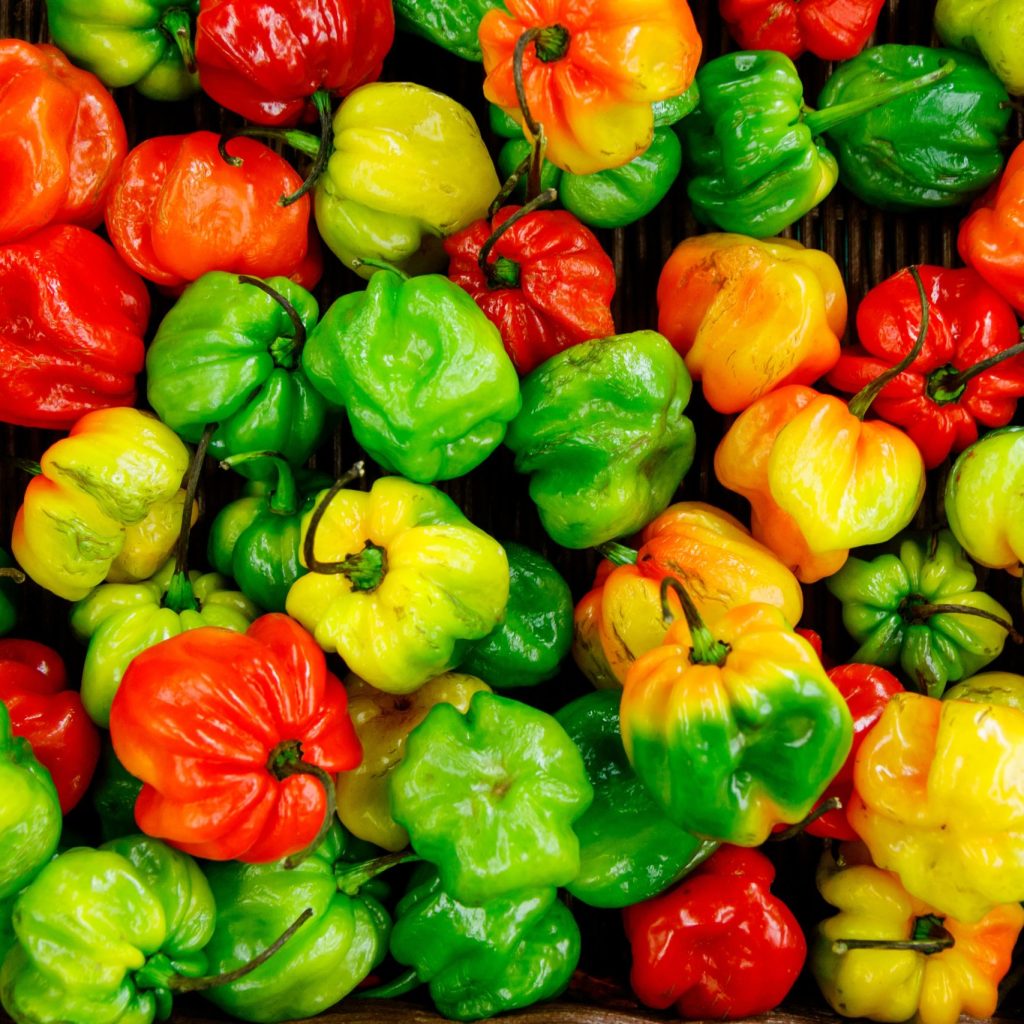
The chilli pepper plant is a perennial herb belonging to the genus Capsicum. They can be grown as perennials or annuals. It has been used as both food and medicine since ancient times. Growing chilli peppers is a fun and rewarding hobby.
Chilli peppers are a type of pepper that is widely used in many cuisines and dishes, and they can be eaten raw, cooked, dried, or as a spice. They are easy to grow indoors, especially if you have a greenhouse or indoor garden. They require little care, and they don’t require much space to grow. If you want many chilli pepper plants, you may also plant them in your backyard garden.
Procedure for Growing Chilli Peppers
Growing chilli peppers requires a lot of patience and dedication. Many people find it daunting, and they can’t seem to find the right place to start. Chilli peppers are very easy to grow and need little care once planted. They require little water and fertiliser, so you shouldn’t need to worry about too many problems while growing them. You should also be careful when handling them as they can cause burning pain if you touch or peel off their skin. Here are some of the basic steps that you can follow to grow chilli peppers successfully at home:
Step 1: Choose a suitable place for growing the pepper plants.
If you want to grow organic peppers in your backyard, you must find a suitable place. To do so, it is best to think about the things that you want the peppers to grow among. Chilli peppers need light, water and warmth to grow. They also need good drainage and aeration to prevent root rot.
Step 2: Prepare the Chilli Pepper Seeds
The chilli pepper seeds require some preparation before they can be planted. Chilli pepper seeds are easy to germinate and can be grown in various soil types and climates.
To sprout your chilli pepper seeds, place them between two damp paper towels: Layer the dampened paper towels on top of each other and allow them to sit for about 10 minutes before sprinkling the seed over them. Cover the top paper towel with another one and keep them in a plastic container or zip-lock bag. Store it in a warm place for 2-5 days until you see the seeds sprouting.
Step 3: Prepare the soil and make sure it is moist.
Another thing to do before planting is to prepare the soil and ensure it is moist. If you don’t prepare the soil properly, your chilli pepper plant will not be able to grow well. You must ensure that your soil is moist; this will improve the quality of your plants and help them grow larger and faster. Moist soil also prevents problems with pests and diseases that can harm your plants.
Step 4: Plant the chilli pepper seeds in small pots or seedling trays with soil and cover them with a transparent plastic sheet.
You may use a pot or seedling tray to grow your chilli pepper plant.
It must be covered to keep them from drying out and losing moisture. You can use clear plastic sheeting, which is available at most hardware stores, or you can use a thin piece of cardboard. Soil should be moist but not wet so it doesn’t hold onto too much water and drown the plant.
Step 5: Water the chilli plant regularly until it starts growing leaves
Watering the chilli plant with a spray bottle is not a good idea. They must be watered on the soil so the roots can access water and nutrients. The best time for watering is in the morning or evening.
Watering a plant regularly until it starts growing leaves is very important. You should ensure you don’t overwater your plant, leading to root rot and other problems.
Step 6: Provide enough sunlight for your chilli plant
When you grow a chilli plant, it needs a lot of sunlight. The light helps the plant produce chlorophyll, which is responsible for making the plants green and giving them their vibrant colours.
For your chilli plant to thrive, you should ensure that there is no shady area in the room where it’s planted. If you have an area in the room with shadows all day long, your chilli plant will not thrive and might even die.
Step 7: Maintain your chilli plants
After the steps mentioned above, you want to maintain it healthy until it starts bearing chilli pepper fruits. To do this, you need to:
- Keep the soil moist
- Use compost to fertilise it every week.
- If you use seedling trays, you may transfer them into a bigger pot or your garden soil after three months.
Requirements for Growing Chilli Peppers

Soil
Chilli pepper plants need a lot of nutrients in the soil to grow and thrive. The soil needs to be rich in nitrogen, phosphorus and potassium.
Watering
Chilli peppers are a plant that requires a lot of water to grow. This is because they need to be watered daily. When you are growing chilli peppers, you should make sure that you give them enough water so that they can grow but not too much so that they drown and die.
The ideal watering of the chilli plant is twice a day. Put just the right amount of water to make your soil moist.
Temperature
To grow a chilli pepper plant, it needs to be kept at a specific temperature. The temperature requirement of the chilli pepper plant varies with the seasons; the colder the weather, the more warm temperature is needed.
Chilli peppers grow best at a temperature between 12-24 degrees Celsius (54-75 degrees Fahrenheit). The optimum temperature for growing them indoors is 20 degrees Celsius (68 degrees Fahrenheit), while they grow well outside at 15-25 degrees Celsius (59-77 degrees Fahrenheit).
Location
Chilli peppers are the most popular spice in the world, used by almost every global cuisine. They are small fruits that grow on an 8-10 foot tall plant, which needs a lot of space to grow.
Lighting
The chilli pepper plant needs 6 hours of sunlight for optimal growth, so it is best to plant them in a sunny location for at least 6 hours.
Chilli plants need sunlight to grow and thrive. But some people don’t have enough sunlight in their homes. So, they use artificial light to provide enough sunlight for the plant.
There are a few ways that you can provide enough sunlight for your chilli plant:
- Use fluorescent light bulbs or LED lights;
- Place the plant on a sunny windowsill;
- Use a grow light
Chili Plant Care
Pinching
Pinching chilli peppers is a popular method of cultivation. This process uses the principle of plant tissue culture, a technique that can be used to grow food and other plants without soil. The plant starts as seeds in water and is gradually transferred to the root mat, where it can start absorbing nutrients.
Support
Chilli pepper plants are a popular plant for home gardens. They are easy to grow and produce lots of peppers. However, they need proper care to thrive. Chilli pepper plants need a lot of attention from their owner to grow well.
The best way to support your chilli pepper plant is by giving it the right amount of water and light each day. You should also ensure that the soil is moist but not too wet at all times, so it doesn’t rot or get mouldy.
Deadheading
Deadheading is the process of removing flowers from a plant. This helps in increasing the number of flowers on the plant and also prevents the plant from becoming overcrowded. Chilli pepper plants need to be deadheaded regularly to make sure that they have enough space for all the flowers to grow.
Pollination
The pollination of the chilli pepper plant is an integral part of the process because it leads to fruit formation and, eventually, seeds. Pollination can be done by insects, wind, or other plants such as tomatoes or cucumbers.
Pests and Diseases
Chilli pepper plants are susceptible to pests and diseases. One of the most common pests is the red spider mite. It can be controlled by using pesticides, so it is essential to know how much pesticide is needed for a particular plant.
Chilli Varieties You Can Easily Grow
There are wide varieties of chilli plants, and each variety has a unique flavour. The different chilli plants are classified based on their origin and heat level.
The following is a list of the most popular varieties of chilli plants that you can quickly grow at home.
Patio Sizzle Chilli
The patio chilli plant is annual so it will grow in any well-drained area with full sun and no frost. It requires little maintenance but does need to be watered regularly. The plants are typically 2 to 3 feet tall with red, yellow or orange flowers.
Poinsettia Chili
The Poinsettia Chili plant is a chilli pepper plant that grows well in any climate. It has a fantastic flavour and can be used for sweet and spicy dishes. It’s also very versatile as it can be used in hot and cold dishes.
Mirasol
Growing mirasol chilli peppers is not difficult, but it does require a lot of care and patience to get them to grow well and yield good crops. The plants need to be watered at least once every day, and they should also be provided with plenty of light to grow tall enough to produce fruit pods.
Prairie Fire
The growing of prairie fire plants requires minimal care. It doesn’t need a lot of light, but it does need to be watered regularly. The plant is also very easy to grow and doesn’t need much space either – it can quickly be grown on balconies or patios.
Etna
Etna chilli is a type of chilli pepper hybrid between the jalapeno and the cayenne. It has a spicier taste than most other types of chilli peppers. Etna chilli plant is an easy-to-grow plant, which will take about two months to grow from seed to harvest. It can grow in any climate as long as it has sufficient sunlight and warmth.
Habanero Cristina
The habanero plant is a popular food item in many countries like Mexico and Thailand. It is also an ingredient in sauces, salsas, and other food products. Growing habaneros is not difficult because they are easily propagated from cuttings or stem cuttings that are taken from mature plants.
Growing habaneros can be difficult for those in colder climates because it requires warm temperatures to grow successfully.
Macho
Growing a macho chilli plant is a relatively easy process that can be done by anyone. It is the perfect plant for beginners and the best start in growing chilli peppers. It is a type of hot pepper that can grow up to 10 meters tall.
Cayenne
Cayenne peppers are a type of chilli pepper that is grown in tropical and subtropical regions. They are also known as red capsicum peppers. The cayenne chilli plant is a perennial plant that can grow up to 2 meters tall. It is often grown in gardens, balconies, and patios for ornamental purposes or as a spice.
Conclusion:
- Chilli peppers are a popular vegetable grown in many parts of the world.
- With the right amount of care, you can quickly grow chilli peppers in your garden.
- There are a lot of things you must consider in growing chilli peppers, such as soil, watering, temperature, location, and lighting.
- The varieties of chilli that are the easiest to grow include patio sizzle chilli, prairie fire, etna, habanero, macho, and cayenne.
FAQs
How long does it take for a chilli plant to bear fruit?
It takes a chilli plant around two years to reach maturity and then between six and eight months for it to bear fruit. They will continue to produce fruit until they die, but the amount of fruit produced is usually limited.
Is it easy to grow chilli peppers?
Most chilli varieties are easy to grow, although they have some slight differences from other edible crops in terms of their needs.
How many years can a chilli plant live?
The average lifespan of a chilli plant is actually between 10 and 20 years, depending on how it is taken care of and its variety.

